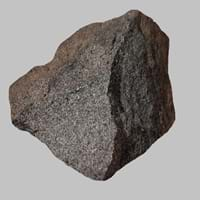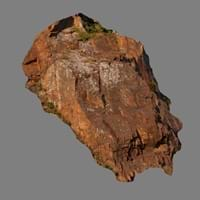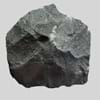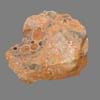Definition
Pyrolite is an igneous rock consisting of about three parts of peridotite and one part of basalt
Granulite is fine to medium grained metamorphic rock with a granular of polygonal crystals.
Origin
Pike County, U.S
Central Europe
Discoverer
Unknown
Unknown
Etymology
From the chemical and mineralogical composition of the upper mantle of the Earth
From Latin granulum, a little grain or fine grained
Class
Igneous Rocks
Metamorphic Rocks
Sub-Class
Durable Rock, Medium Hardness Rock
Durable Rock, Hard Rock
Group
Plutonic
Not Applicable
Other Categories
Coarse Grained Rock, Opaque Rock
Coarse Grained Rock, Medium Grained Rock, Opaque Rock
Texture
Phaneritic
Granoblastic
Color
Dark Greenish - Grey
Black, Brown
Durability
Durable
Durable
Scratch Resistant
Yes
Yes
Appearance
Rough and Shiny
Veined or Pebbled
Interior Uses
Decorative Aggregates, Interior Decoration
Bathrooms, Countertops, Decorative Aggregates, Entryways, Flooring, Homes, Hotels, Interior Decoration, Kitchens, Stair Treads
Exterior Uses
As Building Stone, As Facing Stone, Garden Decoration, Paving Stone
As Building Stone, As Facing Stone, Garden Decoration, Office Buildings, Paving Stone
Other Architectural Uses
Curbing
Curbing
Construction Industry
As Dimension Stone, Cobblestones
As Dimension Stone, Building houses or walls
Medical Industry
Not Yet Used
Not Yet Used
Antiquity Uses
Artifacts, Monuments, Sculpture
Artifacts, Monuments, Sculpture
Commercial Uses
Creating Artwork, Gemstone, Jewelry, Source of Chromite, Platinum, Nickel and Garnet, Source of Diamonds
Curling, Gemstone, Laboratory bench tops, Soil Conditioner, Tombstones
Types
Dunite, Wehrlite, Harzburgite, Lherzolite
Not Available
Features
Constitutes upper part of the Earth's mantle, Generally rough to touch, Is one of the oldest rock
Clasts are smooth to touch
Archaeological Significance
Famous Monuments
Data Not Available
Data Not Available
Famous Sculptures
Data Not Available
Data Not Available
Pictographs
Used
Not Used
Petroglyphs
Used
Not Used
Formation
Pyrolite is a fine-grained, hard rock which is a type of metasomatite, essentially altered basalt. It forms with or without crystallization, either below the surface as intrusive rocks or on the surface as extrusive rocks.
Granulite is a fine-grained granular metamorphic rock in which the main component minerals are feldspars and quartz and forms at high temperature and pressure conditions.
Mineral Content
Amphibole, Chromite, Garnet, Magnesium, Olivine, Phlogopite, Plagioclase, Pyroxene
Amphibole, Biotite, Feldspar, Hornblade, Micas, Muscovite or Illite, Plagioclase, Quartz
Compound Content
Ca, Fe, Mg, Potassium, Silicon Dioxide, Sodium, Titanium Dioxide
Aluminium Oxide, CaO, Carbon Dioxide, Iron(III) Oxide, FeO, Potassium Oxide, MgO, MnO, Sodium Oxide, Phosphorus Pentoxide, Sulfur Dioxide, Titanium Dioxide
Types of Metamorphism
Burial Metamorphism, Cataclastic Metamorphism, Contact Metamorphism, Hydrothermal Metamorphism, Impact Metamorphism, Regional Metamorphism
Not Applicable
Types of Weathering
Biological Weathering, Chemical Weathering, Mechanical Weathering
Biological Weathering, Chemical Weathering
Types of Erosion
Chemical Erosion, Coastal Erosion, Glacier Erosion, Sea Erosion, Water Erosion, Wind Erosion
Chemical Erosion, Water Erosion, Wind Erosion
Grain Size
Coarse Grained
Medium to Coarse Grained
Fracture
Irregular
Not Available
Porosity
Less Porous
Very Less Porous
Cleavage
Imperfect
Imperfect
Toughness
2.1
Not Available
Specific Gravity
3-3.01
2.8-3.0
Transparency
Translucent to Opaque
Opaque
Density
3.1-3.4 g/cm3
3.06-3.33 g/cm3
Resistance
Heat Resistant, Pressure Resistant, Wear Resistant
Heat Resistant, Wear Resistant
Deposits in Eastern Continents
Asia
China, India, Indonesia, Kazakhstan, Russia, South Korea, Thailand, Turkey
China, India, Iran, Saudi Arabia, Sri Lanka, Taiwan, Thailand, Turkey, Vietnam
Africa
Morocco, South Africa
Angola, Egypt, Madagascar, Nigeria, South Africa
Europe
Finland, France, Georgia, Germany, Great Britain, Italy, Kazakhstan, Netherlands, Norway, Spain, Switzerland, Venezuela
Austria, Belgium, Finland, France, Germany, Italy, Norway, Sardinia, Spain, Switzerland, The Czech Republic, Venezuela
Others
Not Yet Found
Not Yet Found
Deposits in Western Continents
North America
Canada, USA
Canada, USA
South America
Brazil
Not Yet Found
Deposits in Oceania Continent
Australia
New Zealand, Western Australia
Not Yet Found
Pyrolite vs Granulite Characteristics
Though some rocks look identical, they have certain characteristics which distinguish them from others. Characteristics of rocks include texture, appearance, color, fracture, streak, hardness etc. Pyrolite vs Granulite characteristics assist us to distinguish and recognize rocks. Also you can check about Properties of Pyrolite and Properties of Granulite. Learn more about Pyrolite vs Granulite in the next section. The interior uses of Pyrolite include Decorative aggregates and Interior decoration whereas the interior uses of Granulite include Bathrooms, Countertops, Decorative aggregates, Entryways, Flooring, Homes, Hotels, Interior decoration, Kitchens and Stair treads. Due to some exceptional properties of Pyrolite and Granulite, they have various applications in construction industry. The uses of Pyrolite in construction industry include As dimension stone, Cobblestones and that of Granulite include As dimension stone, Building houses or walls.
More about Pyrolite and Granulite
Here you can know more about Pyrolite and Granulite. The life cycle of a rock consists of formation of rock, composition of rock and transformation of rock. The composition of Pyrolite and Granulite consists of mineral content and compound content. The mineral content of Pyrolite includes Amphibole, Chromite, Garnet, Magnesium, Olivine, Phlogopite, Plagioclase, Pyroxene and mineral content of Granulite includes Amphibole, Biotite, Feldspar, Hornblade, Micas, Muscovite or Illite, Plagioclase, Quartz. You can also check out the list of all Igneous Rocks. When we have to compare Pyrolite vs Granulite, the texture, color and appearance plays an important role in determining the type of rock. Pyrolite is available in dark greenish - grey colors whereas, Granulite is available in black, brown colors. Appearance of Pyrolite is Rough and Shiny and that of Granulite is Veined or Pebbled. Properties of rock is another aspect for Pyrolite vs Granulite. The hardness of Pyrolite is 5.5-6 and that of Granulite is 6-7. The types of Pyrolite are Dunite, Wehrlite, Harzburgite, Lherzolite whereas types of Granulite are Not Available. Streak of rock is the color of powder produced when it is dragged across an unweathered surface. The streak of Pyrolite and Granulite is white. The specific heat capacity of Pyrolite is 1.25 kJ/Kg K and that of Granulite is 0.14 kJ/Kg K. Depending on the properties like hardness, toughness, specific heat capacity, porosity etc., rocks are resistant to heat, wear, impact, etc.Pyrolite is heat resistant, pressure resistant, wear resistant whereas Granulite is heat resistant, wear resistant.





